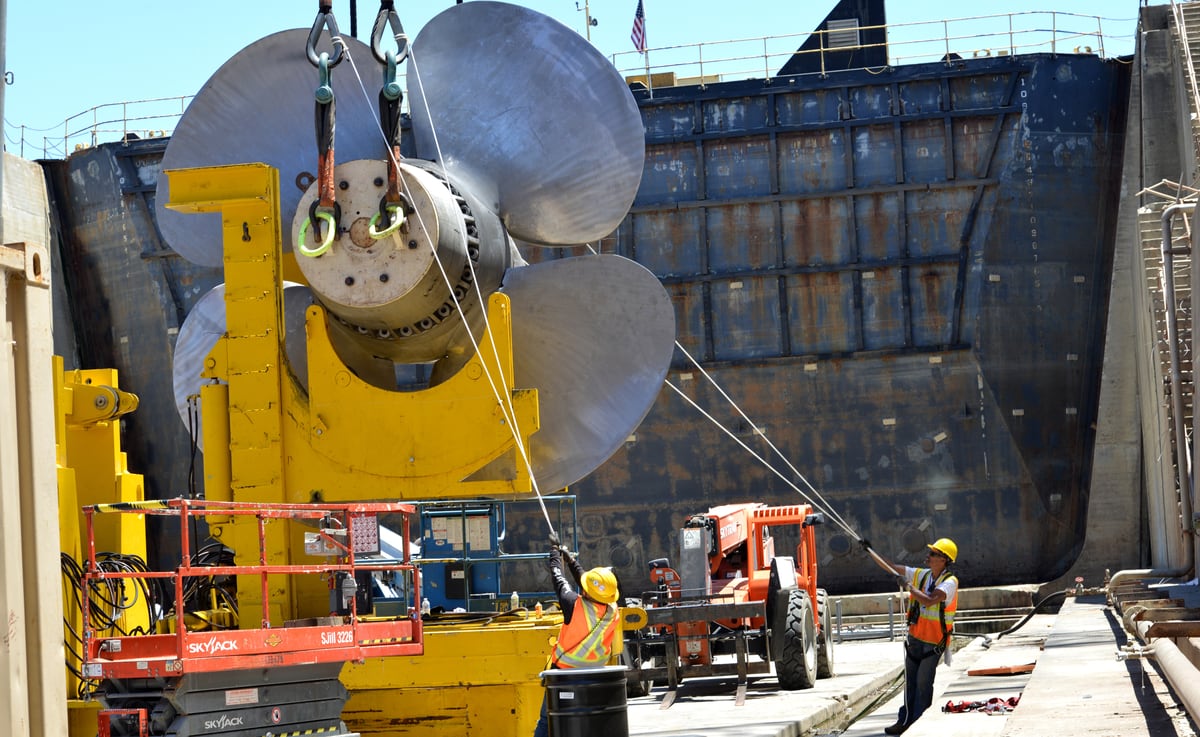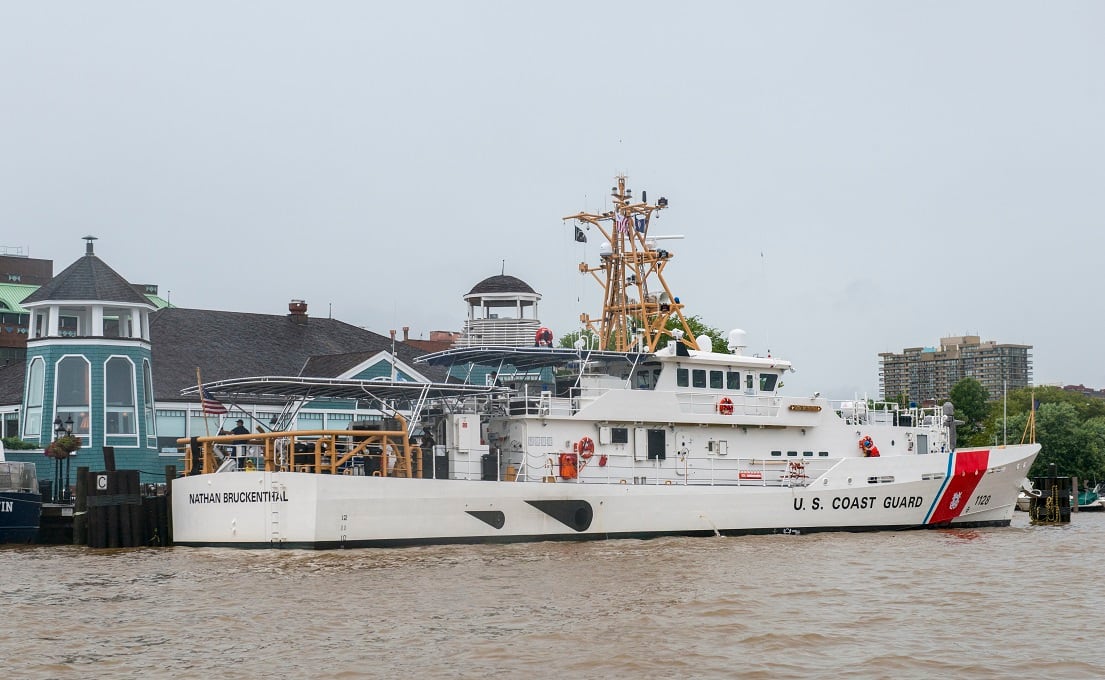Partisan wrangling on Capitol Hill over funding President Donald Trump’s border wall might doom the Coast Guard’s plan to begin building a needed icebreaker.
A draft of the Homeland Security Appropriations Act percolating out of the House of Representatives proposes to strip $750 million out of the Coast Guard’s 2019 budget, part of a larger effort to sluice $5.2 billion in federal funds to barrier construction along the international boundary with Mexico and hike spending on Immigration and Customs Enforcement programs.
The move comes while some Republican lawmakers jockey to prove their support of the president as primary elections loom and Democrats angrily decry cuts to the Coast Guard, a DHS agency with funding coming from both the Homeland Security and Pentagon budgets.
In the meantime, Senate leaders have continued to earmark the money for a heavy icebreaker program the Coast Guard says is essential to maintaining America’s presence in the Arctic.
“A lot of this will come down to what the Senate does,” Rep. Duncan Hunter, R-Calif., told the Navy Times on Friday. “This might come down to lawmakers seeking leverage and there might be a deal that’s already been done on the Senate side.”
A Marine combat veteran, Hunter has a unique perch watching the politics play out. An early and ardent supporter of Trump and a strong champion of border security, he’s also been a steadfast proponent for buying icebreakers for the Coast Guard.
He’s also on the House Armed Services Committee, which overseas Pentagon funding of the Coast Guard, and chairs the Transportation and Infrastructure Committee’s Subcommittee on Coast Guard and Maritime Transportation.
In early 2017, Hunter got so frustrated with dickering over the Coast Guard’s budget that he called for removing it from DHS and giving it to the Pentagon.
“Right now, we can’t really do anything substantial in the Arctic. Our icebreaker is in dry dock for months out of the year. If it breaks down and gets stuck up there, we’ll have to ask the Russians for help,” Hunter said.
Contractors are mending the Polar Star now at a shipyard in Vallejo, California. The repairs include replacing the cutter’s 16-foot-diameter propellers.

Hunter’s warning was backed up by a Congressional Research Service report published Wednesday. Capitol Hill’s nonpartisan research arm told lawmakers that the Coast Guard’s polar icebreaking fleet has dwindled to one heavy ship — the Polar Star — and a medium model, the Healy. A second heavy breaker, the Polar Sea, suffered an engine fire in 2010 and can’t deploy.
The heavy breakers entered service in 1976 and 1978, putting them well beyond their projected 30-year service lives. In fact, the Coast Guard harvests the Polar Sea to keep the other breaker operational.
The Navy operates no icebreakers.
A DHS analysis in 2013 concluded that the Coast Guard needs up to six icebreakers — three heavy and three medium ships — to meet mission demands.
“Assured year-round surface access is an essential element of U.S. national security,” said Coast Guard spokeswoman Lt. Amy Midgett in a written statement emailed to Navy Times on Friday. "As interests and activities evolve in the Arctic, it is essential we have the capability to provide that access.
"Additionally, the Coast Guard is responsible for maintaining the safety and security of the maritime transportation system and coordinates national search and rescue efforts. Increased activity in the polar regions continues to grow, and the Coast Guard must be properly resourced with icebreaking assets to protect U.S. security, environmental, and economic interests in these harsh environments.”
Rivals to American interests in the Arctic haven’t cut their icebreaking fleet. Russia now boasts 46 breakers, with 11 more under construction and four more planned. Even China, a nation with no polar territories, owns three breakers and there’s another on the way, according to the Congressional Research Service.
RELATED

The Coast Guard hoped to begin building a new heavy icebreaker next year so that it could enter the fleet by 2023. Congress gave the polar icebreaking program nearly $360 million through 2018, all but $60 million from the Navy’s shipbuilding coffers.
The Coast Guard’s proposed budget for 2019 had sought $750 million in acquisition funding, enough to construct the heavy icebreaker and start on a second. But all of that could be diverted to the border wall.
Early estimates for the first phase of the president’s wall — about 300 miles of construction and another 700 miles of upgrades to existing barriers — hovered at $18 billion.
To Hunter, gutting any funding from Coast Guard is misguided because that ultimately could hurt efforts to interdict the smuggling of drugs and people. The Coast Guard is the primary maritime agency operating counter-narcotic smuggling and undocumented immigration over seaways.
“It’s like a balloon,” he said. “If you squeeze the land border by adding security the smugglers will shift to the ocean.”
Hunter thinks there’s enough money for both Trump’s wall and the icebreaker but wants Senate leaders like Dan Sullivan, R-Alaska, and top Navy officials lend a voice for the Coast Guard, the smallest of the armed forces with a budget last year of only about $10.6 billion.
And that means pointing a spotlight on the Arctic Ocean, a petroleum-rich region many critics think the Pentagon too often overlooks.
“Go and look at the National Defense Strategy and ask yourself why the Arctic was left out,” said Hunter.
Prine came to Navy Times after stints at the San Diego Union-Tribune and Pittsburgh Tribune-Review. He served in the Marine Corps and the Pennsylvania Army National Guard. His awards include the Joseph Galloway Award for Distinguished Reporting on the military, a first prize from Investigative Reporters & Editors and the Combat Infantryman Badge.





